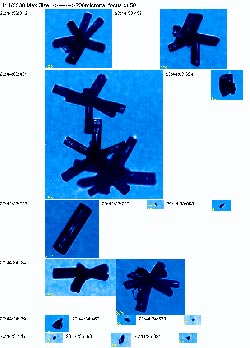Arctic Aerosol Study Flies By
Published: 30 April 2008

Ending its mission with a final flight on April 30, 2008, the Indirect and Semi-Direct Aerosol Campaign (ISDAC) flew a total of 103 research hours, completing 27 science flights primarily in the region around the ARM North Slope of Alaska site in Barrow. These flights included several golden cases where both cloud and aerosol measurements were obtained above, within, and below mixed-phase cloud layers. In addition, the campaign successfully demonstrated first-time airborne deployments of key instruments for measuring aerosol properties. All of the campaign’s primary objectives were met, plus some secondary objectives, to help answer the team’s science questions related to Arctic cloud and aerosol interactions.

All of the 42 instruments on board the NRC-Convair-580 operated nominally throughout the campaign, including two that had never flown in an official airborne research mission before. The Single Particle Laser Ablation Time-of-flight mass spectrometer (SPLAT) was developed at Pacific Northwest National Laboratory and converted for airborne deployment through funding by DOE’s Atmospheric Science Program (ASP). The SPLAT obtains size-resolved aerosol composition data, while the Continuous Flow Diffusion Counter (CFDC) from Texas A&M University provides measurements of aerosols and ice nuclei concentration. Both instruments worked very well, and combined with measurements from the other aerosol instruments used during ISDAC, will improve scientific understanding of the relationship between properties of aerosol particles and their activity as cloud condensation and ice nuclei, which play a major role in the amount of precipitation and heat that reach the Earth’s surface. The ASP supported the campaign with instruments to measure aerosol composition and optical properties.

The ISDAC campaign generated a wealth of new data using state-of-the-art instruments. This data set will allow scientists to link cloud microphysics, aerosol chemistry and optical properties, particularly for ice and mixed-phase clouds, which are key regulators of Arctic climate. This information will help to develop better models and potentially lead to more accurate predictions of climate change and its impacts. Some preliminary findings will be presented as early as this coming June at the GEWEX Cloud System Study meeting in Toulouse, France.
The ARM Climate Research Facility is a DOE Office of Science user facility. The ARM Facility is operated by nine DOE national laboratories, including .
Keep up with the Atmospheric Observer
Updates on ARM news, events, and opportunities delivered to your inbox
ARM User Profile
ARM welcomes users from all institutions and nations. A free ARM user account is needed to access ARM data.


















